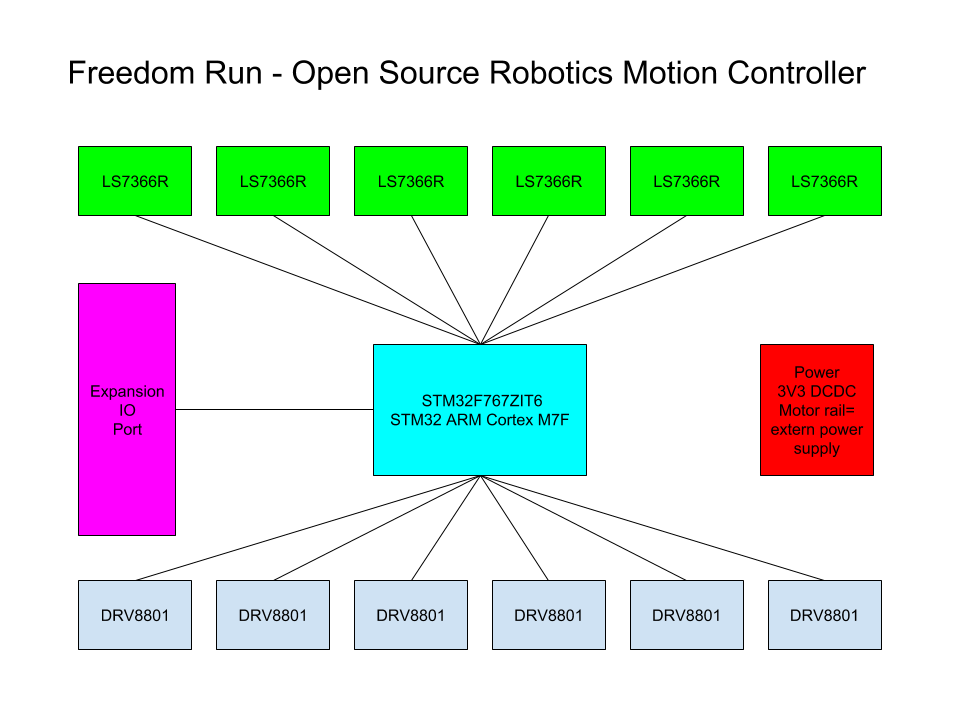-
Update: Choosing Components
05/11/2018 at 02:18 • 0 commentsHey so I'm in the process of selecting all the components for Freedom Run as well as all my other PCB based projects. I'm working hard to choose common parts between all the boards so I can use the same footprints/symbols and save on ordering parts.
Traditionally my brand of hardware design has me doing part selection while doing schematic but this time I'm doing it before hand. I'm doing things with a bit more documentation added into the mix hence choosing parts first then making symbols and footprints. Also I plan to overhaul all my KiCAD libraries and have things separated by part time and commonized between projects.
I'm hoping to hit KiCAD work next week in which case you know me, there will be a PCB done in a few days!!
-
Freedom Run: Hardware Breakdown
04/04/2018 at 00:11 • 0 commentsHey folks enough with the obscure references to early 90s musical groups and on to the raw engineering of the project! Freedom Run is a motion control board geared towards the development of open source industrial robotics and/or any sort of robotic system.
The main board will contain a processor and hardware for driving motors with closed loop control, an expansion port for daughter boards will provide interfaces for sensors and or application specific hardware. However the main board would be completely unable to interface with sensors, some serial ports, GPIO, and ADC inputs will be wired to connectors for some minimal sensor configurations.
The main processor powering Freedom Run will be an ARM Cortex M7F microcontroller from ST Microelectronics. The part I've selected is the STM32F767ZIT6, it provides a crazy amount of power per price coupled with the standard peripheral set most want in a microcontroller. I'm starting out with this particular chip because it is available on a ST Nucleo board, which can be used as a programmer and for developing firmware early on. Using a chip available on a Nucleo board also allows other people interested in the project to participate and try things out too.
Freedom Run will be able to drive up to 6 brushed DC motors with closed loop control in coordinated motion configurations. The Texas Instruments DRV8801 H-bridge IC will be used for motot control. the main board will contain 6 of them for the 6 motors. This chip was selected because it interfaces to micro-controllers in a simple way, can be cooled by the PCB passively without a heatsink, has a wide voltage range, and high current rating per phase.
For the closed loop control element of motor control Freedom Run will need to interface with encoders. To interface with encoders I've chosen the LS7366R encoder counter chip from LSI/CSI. Its a rather simple device that provides an SPI interface to a quadrature encoder, handling the sampling of quadrature signals, and completely keeps track of all count/quadrature data. The mainboard will contain 6 of these chips running in synchronization with eachother.
Here is the initial hardware breakdown of Freedom Run based on my component choices:
![]()
Thinking further about the Freedom Run board, the kinds of connectors I plan to use will be similar to the RepRap boards I worked on with Ultimachine, so expect phoenix contact heavy duty power connectors and molex clip connectors for everything else. All pitches will be 2.54mm or multiples of that.
With that, thats all I got for you guys today, happy Hackaday Prize season !!!!!!
-
Free To Run
04/02/2018 at 18:18 • 0 comments
Freedom Run
Six axis closed loop motion controller for open source robotics development
 AVR
AVR